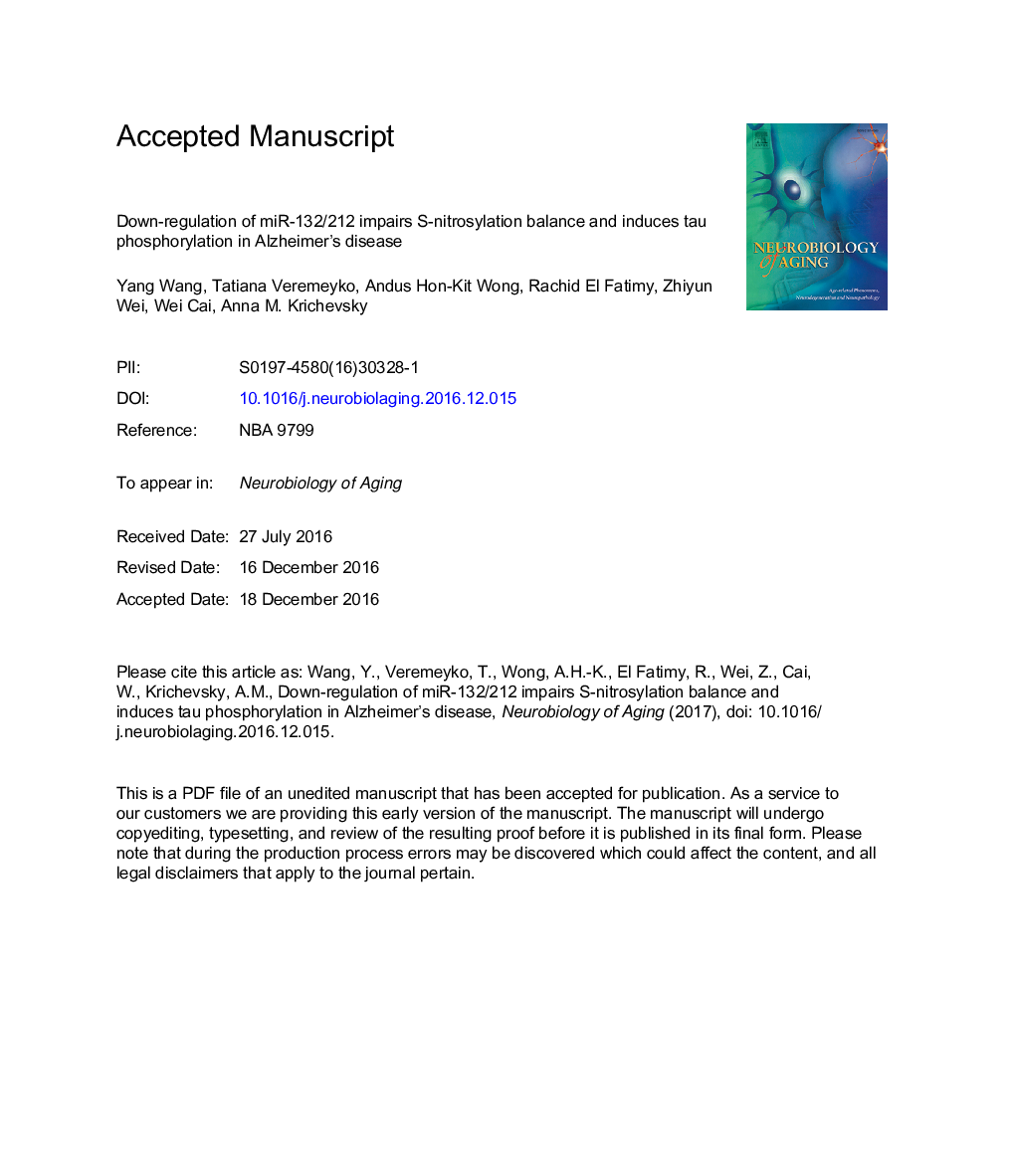| Article ID | Journal | Published Year | Pages | File Type |
|---|---|---|---|---|
| 4932786 | Neurobiology of Aging | 2017 | 36 Pages |
Abstract
MicroRNA-132 is markedly downregulated in Alzheimer's disease (AD) and related tauopathies, and its levels are closely associated with tau pathology in AD. Whether and how miR-132 contributes to pathology in these neurodegenerative diseases remains unclear. Here, we show that miR-132 and its paralogue miR-212 directly regulate the expression of neuronal nitric oxide synthase (NOS1) through the primate-specific binding site. Inhibition of miR-132 in primary human neurons and neural cells leads to increased NOS1 levels and triggers excessive production of nitric oxide, followed by aberrant S-nitrosylation (SNO) of specific proteins associated with neurodegeneration and tau pathology, such as cyclin-dependent kinase 5, dynamin-related protein 1, and glyceraldehyde-3-phosphate dehydrogenase. This, in turn, increases tau phosphorylation at disease associated Ser396, Ser404, and Ser202 sites, and impairs neural viability. Our findings indicate that downregulation of miR-132/212 disturbs the balance of S-nitrosylation and induces tau phosphorylation in a NOS1-dependent way, and thereby may contribute to the pathogenesis of AD and other tauopathies.
Related Topics
Life Sciences
Biochemistry, Genetics and Molecular Biology
Ageing
Authors
Yang Wang, Tatiana Veremeyko, Andus Hon-Kit Wong, Rachid El Fatimy, Zhiyun Wei, Wei Cai, Anna M. Krichevsky,
